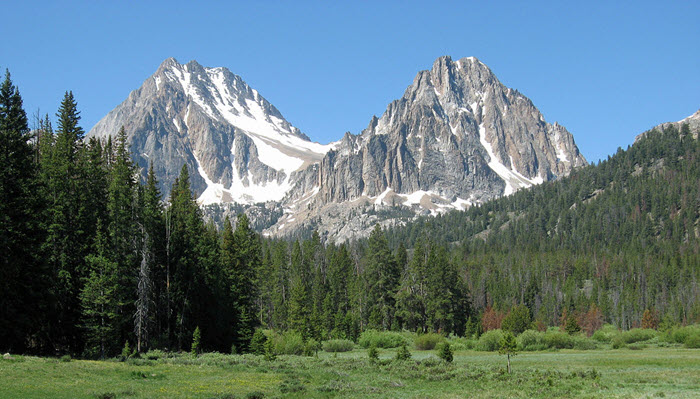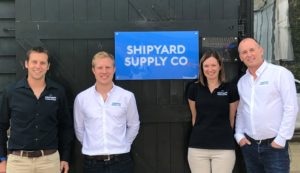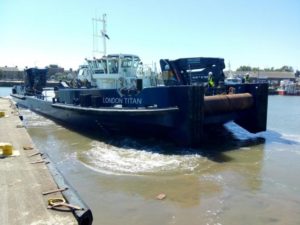Refining the third peak

The three peaks in the sport of sailing cover the range: best in innovation, best in athletics, and best in adventure. These translate to the America’s Cup, the Olympics, and the… it depends where you are standing.
The third peak depends on what is most relevant to you. Forever the Volvo Ocean Race, which was first held in 1973, had been referred to the third peak. But since its beginnings in 1989, the Vendee Globe is now part of the conversation.
The evolving offshore sailing landscape requires us to clarify the difference. The Volvo Ocean Race, now to be referred to as the Race with Volvo no longer the naming sponsor, says it’s the “ultimate test of a team and a human adventure whereas the Vendee Globe makes clear it is the only non-stop solo round the world race without assistance.”
What’s more badass is now more opinion than fact. One is a balls-to-the-wall team event with stopovers and one is a solo test of endurance and performance. Neither are easy with historically very little crossover amongst those that compete in them.
However, these two races are now finding common ground as the IMOCA 60 will be the boat now used for both of them. Used as the class for the Vendee Globe since 2004, the Race is now sorting out how this shorthanded speedster can adapt to its crewed format for the 2021-22 edition.
Held every four years, Alex Thomson (GBR) has two Vendée Globe podium finishes (including a second place in the 2016 edition), and is among the IMOCA skippers helping with this transition.
“With the race in IMOCA 60s, it is very interesting for someone like me – it’s exciting as a sailor,” says Thomson. “In fact, I got into this offshore sailing world initially because I wanted to do the Volvo Ocean Race and now I feel like I have a chance to do it.
“But in effect, we’re bringing two worlds together. And my view is that we need to make sure the two worlds connect and co-exist, as much as possible, within one infrastructure. So that’s what we’re discussing; how do we do that?
“How do we keep costs under control, for example? How do we make it fun for the sailors and the fans? How do we develop the media? All of these are critically important questions to answers and how we do it will determine the success of the event in the future.”
With the IMOCA 60 class approving its use for the Race, now it’s a matter of finding common ground between the IMOCA world and the Race.
“For this to work well, it has to work for everybody,” notes Thomson. “We have to get more boats on the start line in 2021. Many more boats. And that’s my goal.
“To do that, we need to make the division between big and small teams as small as possible. The last thing we need is rich teams running away with the Race before the start gun is fired. And I think if everybody is focused on getting more boats on the start line… that is what will drive the rules and everything else.”
After the 2017-18 Volvo Ocean Race had crew sizes between 8 and 10 people on the Volvo Ocean 65, one of the big questions is how much smaller will the crew be for the IMOCA 60.
“I’ve just sailed across the Atlantic and we had five on board, so it was interesting to find out that there is not a lot of space, that’s for sure, but with five people you can certainly push the boat much harder,” observed Thomson.
“So everything has an impact. If you want to make the boat more reliable, then the less crew you have, the less they push, perhaps the more reliable the boat will be. And the more crew you put on board, the more cost you have as well.
“But we’re all clear that this needs to be a fully-crewed race and my understanding is that the objective is to not have a fancy autopilot, so it’s a human-driven boat, which I think is important as well.”
Thomson, who is building a new boat for the next Vendée Globe in 2020, also has sights on doing the Race in 2021.
“We are looking at two options. One is to do the Vendée Globe, and then come out and do the Race as well. Another option is to build a new boat for the next Race, which obviously carries a cost… In the end, it will depend on the final rules, on how many gains there are to make. So at this point, it’s difficult to make that decision.”
On how it will be work between Race teams and IMOCA teams, Thomson thinks there is a big opportunity for the IMOCA teams.
“After the Vendée Globe we have a big space on the calendar and not a lot to do and you start looking for new partners,” notes Thomson. “This is a great opportunity for the boats to be chartered, or for a merger with teams who want to do the Race.
“And of course on the IMOCA side, we have a lot of data and a lot of experience in these boats, so the Race teams could benefit from that as well.
“The two ecosystems could really come together and flourish. I think if we get this whole thing right, then everybody will say, ‘Well done, you’ve created something that increases the sustainability of the business model for the teams, which means that our sport will be growing for a long time’. That’s what we all need to focus on.”
Source: The Race
Story from Scuttlebutt Sailing News










